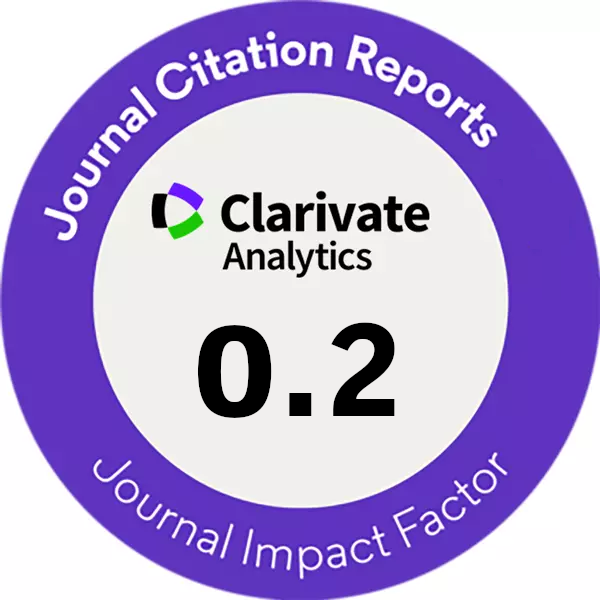Analysis on the effect of buried depth-initial water content of the tunnel in expansive rock
DOI:
https://doi.org/10.14311/CEJ.2024.04.0033Keywords:
Expansive rock, mechanical properties, deformation law, tunnel, buried depthAbstract
There are countless engineering disasters induced by expansive strata in the tunnel project. Nowadays, most of the research focuses on the basic characteristics of expansive rock and soil, while the influence about coupling buried depth and different initial water content of surrounding rock on the tunnel lining is still rarely involved. Based on the principle of temperature and humidity equivalence, this paper discusses the behavior of rock as well as the mechanical properties of lining under the interaction of different buried depth and initial water content by using FLAC3D numerical simulation. It was found that the initial water content show an obvious effect on the evolution about the plastic area of rock compared with the buried depth of the tunnel. For shallow tunnels with a water content of less than 10 %, the plastic zone of the vault will penetrate to the surface after water absorption and expansion. Under the coupling effect, buried depth inhibits the development of the plastic zone to a certain extent. For different initial water contents of the surrounding rock, the displacement of the tunnel adds with the burial depth. The swelling of rock will significantly reduce the safety of the primary support, and when the burial depths of the tunnel increase to 150 m, the security coefficients of some primary support structures are less than 2, which does not meet the need in standard. The safety factor of secondary support is mainly influenced by the expansion force, not the ground pressure (represented by buried depth). The findings may be valuable reference for the analysis as well as evaluation of the security as well as stability of tunnels in expansive mudstone.
Downloads
References
Zhang, Y.T., Sun, X.L., Yang, B., et al, 2021. Influence of local expansion on safety of tunnel support .Tunnel Construction, Vol. 41, 306-312. https://doi.org/10. 3973/j. issn. 2096-4498. 2021. S2. 039
Xiang, Q.M., Gao, Y.Q., Su, J.X., et al, 2022. Strata subsidence characteristics of shield tunneling in coastal soft soil area. Stavební obzor-Civil Engineering Journal, Vol. 31, 444-455. https://doi.org/10.14311/CEJ.2022.03.0033
Tang, Y.C., Huang, Z.H., Zhang, K., et al, 2014. Physical mechanical indexes and swelling property of weathered tertiary mudstone at shallow depth in Nanning. Journal of Engineering Geology, Vol. 22, 144-151. https://doi.org/10.13544/j.cnki.jeg.2014.01.011
Chen, Y.L., Liu, G.Y., Du, X., et al, 2020. Elastoplastic solution for a deep-buried tunnel considering swelling stress and dilatancy. Rock and Soil Mechanics, Vol. 41, 2525-2535. https://doi.org/10.16285/j.rsm.2019.1799
Chen, X., Wu, B.Y., Luo, W.J., et al, 2020. Stability of expansive soil tunnel surrounding rock under humidity condition. Journal of Civil and Environmental Engineering, Vol. 41, 2525-2535. https://doi.org/10.11835/i.issn.2096-6717.2020.149
Zhao, T., Liang, Q.G., Wu, F.Y., et al, 2022. Impact of base surrounding rock expansion on the mechanical characteristics of mudstone tunnel. Jouranl of southeast university, Vol. 52, 538-546. https://doi.org/10. 3969 /j.issn.1001-0505.2022.03. 015
Liao F.X., 2022. Instability Mechanism of Yuyuan tunnel based on expansion and strength deterioration effect. Safety and Environmental Engineering, Vol. 29, 33-45. https://doi.org/10.13578/j.cnki.issn.1671-1556.20211374
Zhang, C.B., Yu, Z.X., 2019. Study on impacts of softening and swelling of surrounding rocks on loosening pressure of rock mass. Modern Tunnelling Technology, Vol. 56, 50-56. https://doi.org/10.13807/j.cnki.mtt.2019.02.008
Fan, Q.Y., Liang, X., Han, J.S., 2020. Experimental study on saturation and swelling-shrinkage characteristics of unsaturated expansive rocks. Chinese Journal of Rock Mechanics and Engineering, Vol. 39, 45-56. https://doi.org/10.13722/j.cnki.jrme.2019.0579
Luo, Y., 2018. Elastoplastic analysis on strain softening and fracture expansion of roadway surrounding rock based on D - P criterion. Journal of Safety Science and Technology, Vol. 14, 108-113. https://doi.org/10.11731 /j. issn. 1673-193x. 2018. 11. 017
Zhang, S.K., Leng, X.L., Sheng, Q., 2020. Study of water swelling and softening characteristics of expansive rock. Rock and Soil Mechanics, Vol. 41, 561-570. https://doi.org/10.16285/j.rsm.2019.0358
Cao, P., 2023. Research on stability classification and support countermeasures of expansive mudstone high-speed tunnel. Southwest Jiaotong University. (In Chinese)
Wang, L., Li, Z.Y., 2016. Triaxial compression test analysis of weakly cemented mudstone in west China. Journal of Yangtze River Scientific Research Institute, Vol. 33, 86-90. https://doi.org/10.11988/ckyyb.20151116
Yang, J.P., Fan, Y.H., 2016. The influence of temperature and humidity effect on water absorption softening of swelling rock. Science Technology and Engineering, Vol. 16, 259-263.
Zhang, K., Guo, J.T., Teng, T., 2022. Experimental study on water-softening and seepage characteristics of weakly cemented sandy mudstone: taking Shendong goal mining area as an example. Coal Science and Technology, Vol. 50, 195-201. https://doi.org/10.13199/j.cnki.cst.2021-1216
National Railway Administration of the People’s Republic of China. Code for Design of Railway Tunnel (TB 10003-2016). China Railway Publishing House Co., Ltd, Beijing.
Downloads
Published
Issue
Section
License
Copyright (c) 2024 Author

This work is licensed under a Creative Commons Attribution-NonCommercial 4.0 International License.
Authors who publish with this journal agree to the following terms:
- Authors retain copyright and grant the journal right of first publication with the work simultaneously licensed under a Creative Commons Attribution License that allows others to share the work with an acknowledgement of the work's authorship and initial publication in this journal.
- Authors are able to enter into separate, additional contractual arrangements for the non-exclusive distribution of the journal's published version of the work (e.g., post it to an institutional repository or publish it in a book), with an acknowledgement of its initial publication in this journal.
- Authors are permitted and encouraged to post their work online (e.g., in institutional repositories or on their website) prior to and during the submission process, as it can lead to productive exchanges, as well as earlier and greater citation of published work (See The Effect of Open Access).










